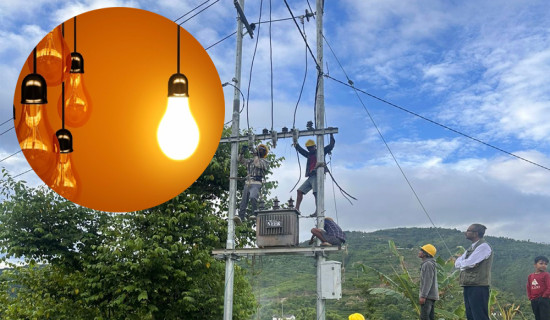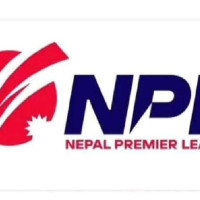- Wednesday, 26 November 2025
PUBLISHER'S NOTE
Past A Century And Miles To Go
Gorkhapatra has not only been a benchmark in Nepali journalism, but also a guiding light for the development of Nepali society and political transformation. It is this very light that provided the initial spark to walk toward the dawn of democracy. Gorkhapatra began its publication on May 7, 1901 under the initiative of then-Rana Prime Minister Dev Shumsher.
In a time shackled by autocratic rule and rigid conservatism, the awareness that the people needed information and the decision to publish a state-run newspaper was a bold and visionary step. The issuance of an official order forbidding the publication of self-praise by the state alongside the newspaper’s launch was not only revolutionary for its time but remains just as relevant and exemplary even today. Amid the grip of Rana autocracy, Dev Shumsher's commitment to public accountability was genuinely noble.
Gorkhapatra is a prestigious institution of Nepali journalism. As the oldest newspaper in the country, continuously published for 124 years, it is a living piece of history. More than just the origin of Nepali journalism, Gorkhapatra has also served as a prestigious academy of learning. The institution is deeply linked to our civilisation and culture. Additionally, it has made an unparalleled contribution to the promotion and preservation of our rich literature and linguistic diversity.
The uninterrupted 125-year journey of Gorkhapatra, providing continuous information and education to the public, is an extraordinary and glorious achievement. Having witnessed all kinds of historical upheavals, it stands as a living testament to an entire era. It has closely observed every political and social transformation in Nepal. For the current generation, Gorkhapatra remains the most reliable and authoritative document to understand the character and narrative of earlier Nepali society. Gorkhapatra is more than a newspaper, it is a national treasure that reflects the nation's historical narrative.
In terms of human resources, content variety, reach and technical capacity, Gorkhapatra is the largest publishing house in Nepal. Alongside Gorkhapatra Daily, we also publish Nepal’s first English-language broadsheet, ‘The Rising Nepal’, the prestigious literary magazine ‘Madhupark ’, the youth-centric ‘Yuba Manch’ and the children’s magazine ‘Muna’, all of which are published regularly.
As rich as our legacy and history may be, it is equally essential to strengthen the institution and ensure its relevance in the present. In today’s fast-paced and competitive digital era, we must evolve not only in speed but also in mindset and working methods. To achieve the vision of a 'Smart Gorkhapatra' suited to the digital age, we have launched a comprehensive reform initiative focused on internal systems, operational processes, and content quality.
Gorkhapatra and its affiliated publications, which have long operated under traditional formats, must now undergo a digital transformation. By efficiently leveraging available infrastructure, human resources, and technical tools, we are already progressing toward a smarter, more future-ready platform.
With improvements in workforce utilisation and internal administrative systems, we have also enhanced editorial output, modernised design layouts, and elevated both the presentation and quality of content. These efforts have resulted in a clear and positive impact on institutional revenue.
Since the current management assumed leadership, the institution’s income has steadily increased. According to the annual performance review of public institutions, Gorkhapatra has been operating profitably for the past two fiscal years. In the fiscal year 2023/24, we earned Rs. 735 million. This was up from Rs. 720 million in the fiscal year 2022/23 and Rs. 570 million in the fiscal year 2021/22. As of mid-March in the current fiscal year, our revenue had reached Rs. 480 million. Despite a declining advertising market amid the economic slowdown, this promising performance has strengthened our drive toward self-sustainability.
We are moving forward with new strategies and action plans focused on advertisement, business promotion and revenue growth, aiming to make the institution economically self-reliant and sustainable. Previously reliant mostly on central government advertisements and notices, we are now working to broaden our income sources. With much of the national budget now allocated at the local level, we are partnering with wards, rural municipalities, and municipalities through new business promotion plans. Similarly, we have begun working with new strategies to attract corporate advertisements from the private sector.
Minister of Communication and Information Technology Prithvi Subba Gurung has publicly committed to restructuring Gorkhapatra into a model public service media organisation. In line with that commitment, the process of replacing the outdated Gorkhapatra Corporation Act with a new, relevant law has already begun.
The current Gorkhapatra Act, drafted in 1962 AD in the context of the then-political environment, is no longer relevant. Many of its provisions and structures are incompatible with today’s needs. Drafting a new act aligned with the digital era and the goal of a ‘Smart Gorkhapatra’ could be a pivotal step forward. This will give the institution new life and the energy to move forward more independently, as a responsible state-owned news media outlet. It is crucial to reform the institutional structure and make the workforce and workflow more technology-friendly.
We now face the challenge of transforming and improving to meet the demands of the digital age and compete more assertively in a dynamic market. To meet this challenge, we are coming up with new plans. We are committed to becoming a more refined, beloved, trusted, and accountable public news institution, one that speaks to the heart of every Nepali and is easily accessible to all.
As a state-regulated and state-owned organisation, Gorkhapatra carries a unique identity. We remain conscious of our responsibility to the state, while also upholding our accountability to the public, all the while striving to maintain professional integrity. It is a source of great pride and joy that the government has officially declared May 7 as National Journalism Day based on the founding of Gorkhapatra and that this day is celebrated at the national level.
On this special occasion, we express our heartfelt gratitude to all those who have extended warm wishes and encouragement. We honour all the predecessors who contributed their skills and creativity to this institution, as well as all current members of the Gorkhapatra family for their continued hard work. We sincerely thank all our respected readers, advertisers, and well-wishers for their unwavering support and encouragement throughout Gorkhapatra’s remarkable 124-year-long, continuous journey.
Bishnu Subedi
Executive Chairman

















